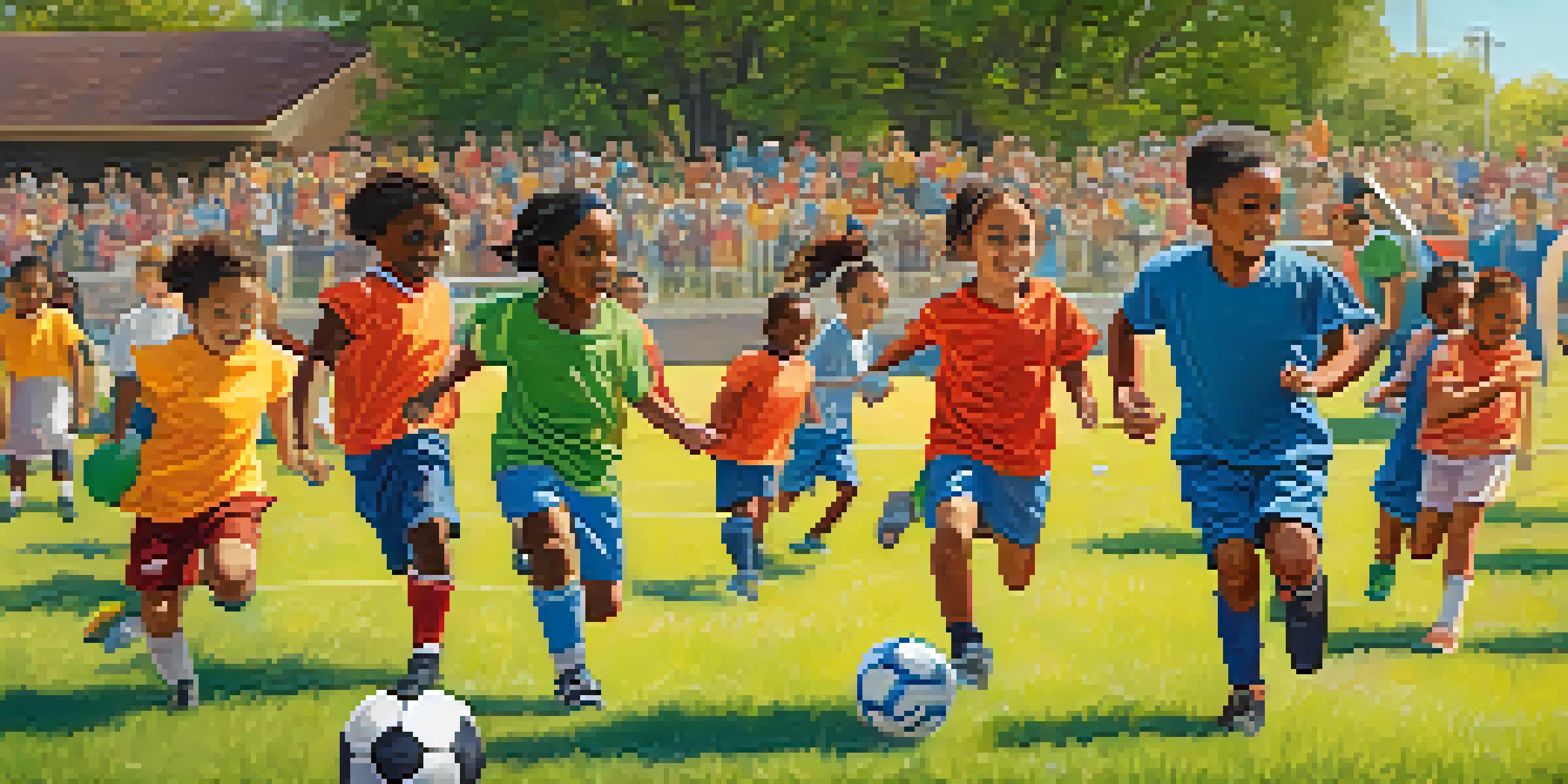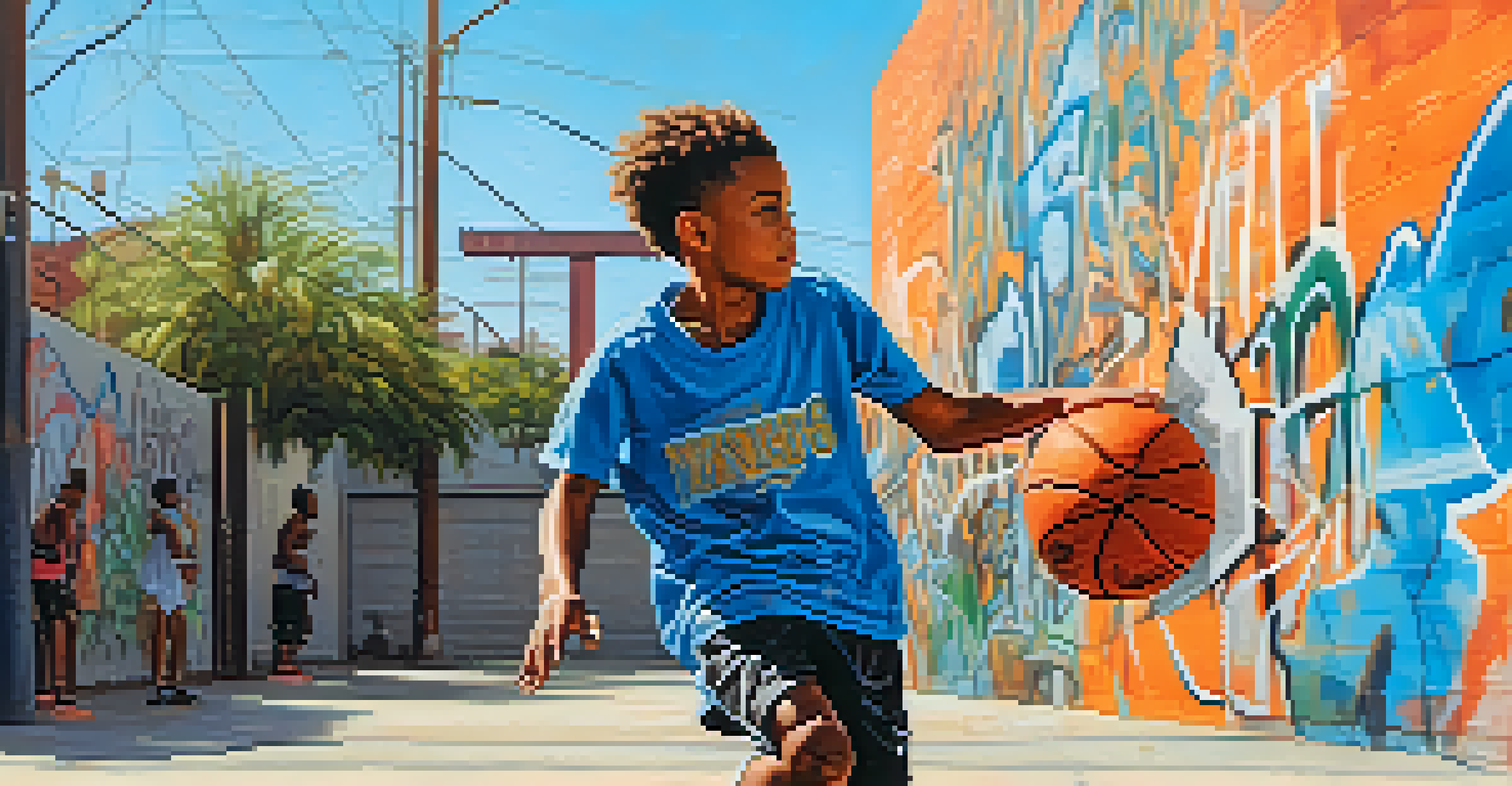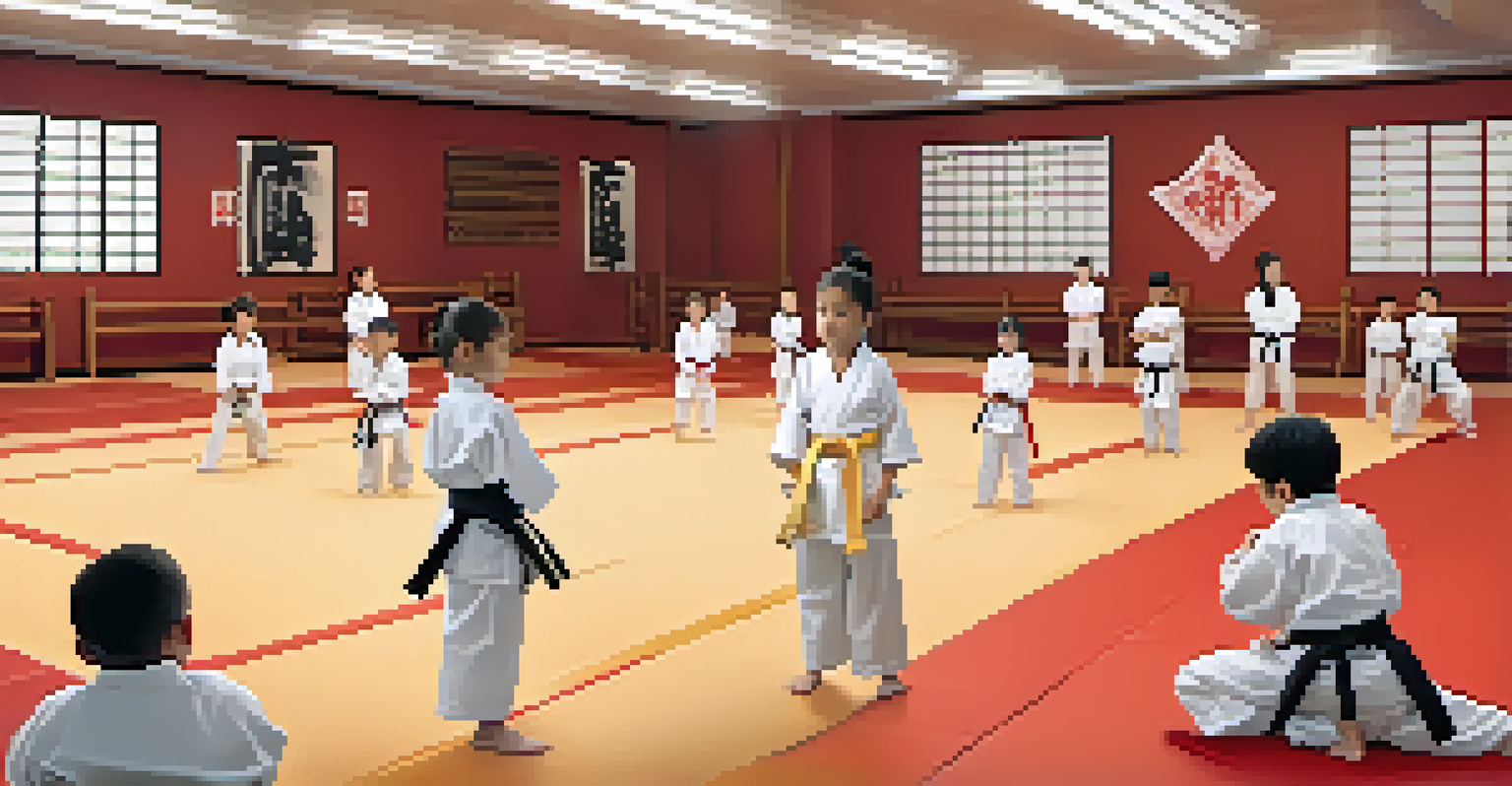How LA's Sports Culture Influences Youth Participation in Sports

A Brief Overview of LA's Sports Landscape
Los Angeles is a vibrant hub for sports, boasting a rich tapestry of professional teams, from the Lakers in basketball to the Dodgers in baseball. This dynamic environment fosters a sense of pride and local identity that resonates deeply with its residents. The variety of sports available allows youth to explore different athletic avenues, encouraging participation from an early age.
Sports do not build character. They reveal it.
Moreover, the city’s diverse population adds to the mix, bringing together different cultures and traditions, which influences the types of sports that youngsters engage in. For instance, soccer is hugely popular among many communities, while others may lean towards basketball or baseball. This melting pot of interests creates an inclusive atmosphere where every child can find their niche.
As youth see their local heroes on the field, court, or rink, they are inspired to pursue sports themselves. The visibility of successful athletes in LA fosters dreams and aspirations, making sports an accessible goal for many young people.
Influence of Local Sports Heroes
Local sports heroes play a pivotal role in shaping youth participation in athletics. Figures like Kobe Bryant and magic Johnson have not only elevated their respective sports but have also become symbols of hard work, dedication, and success. Kids growing up in LA often look up to these athletes, feeling inspired to emulate their idols on and off the field.

When youth see these heroes attending community events or supporting local causes, it reinforces the idea that they too can achieve greatness. This connection between local athletes and the community creates a supportive environment for aspiring young players. Mentorship programs and outreach initiatives led by these sports figures further encourage kids to engage in athletic activities.
LA's Diverse Sports Landscape
Los Angeles offers a variety of sports influenced by its cultural diversity, allowing youth to explore different athletic avenues.
Additionally, the success stories of local athletes contribute to a narrative of possibility, showing that with commitment and perseverance, anyone can rise to fame. These narratives not only motivate participation but also instill valuable life lessons in teamwork and resilience.
Community Programs and Initiatives
Various community programs in Los Angeles are designed to boost youth sports participation. Organizations like LA84 Foundation and After-School All-Stars provide resources, coaching, and access to facilities, ensuring that sports are accessible to all children. These initiatives help to bridge the gap for those who may not have the means to participate otherwise.
Sports do not build character. They reveal it.
Furthermore, these programs often emphasize inclusivity, encouraging children of all skill levels to join in. By creating a non-competitive environment, they allow young athletes to explore their interests without the pressure of performance. This nurturing approach helps build confidence and fosters a love for sports that can last a lifetime.
Through community engagement, young athletes are not just learning how to play; they are also forming friendships and developing social skills. These connections can be just as valuable as the athletic skills they acquire, reinforcing the idea that sports are about teamwork and camaraderie.
The Role of Schools in Sports Participation
Schools in Los Angeles play an essential role in fostering youth sports participation. With structured physical education programs and after-school sports teams, they provide a foundation for young athletes to develop their skills. Schools often serve as the first exposure for children to organized sports, igniting a passion that can carry into adulthood.
Additionally, school sports programs often emphasize teamwork and discipline, instilling life skills that extend beyond the playing field. Students learn the importance of commitment, respect, and hard work—all essential traits that contribute to their overall development. This holistic approach to athletics can make a significant difference in a child’s life.
Impact of Local Sports Heroes
Local athletes like Kobe Bryant inspire youth by serving as role models, reinforcing the belief that success is achievable through dedication.
Moreover, school competitions and events create a sense of community and pride, encouraging parents and families to support their young athletes. This involvement not only boosts children's confidence but also helps to cultivate a culture of sports within the community.
Cultural Diversity and Its Impact on Sports
Los Angeles is renowned for its cultural diversity, which significantly influences the types of sports that gain popularity among youth. Different communities bring their unique sports traditions, enriching the sporting landscape of the city. For example, while basketball and football may dominate certain neighborhoods, others might promote volleyball or martial arts.
This cultural melting pot encourages children to not only try mainstream sports but also explore options that reflect their heritage. Community sports leagues often celebrate these traditions, allowing kids to connect with their roots while engaging in physical activity. This connection can lead to a deeper appreciation for sports and their cultural significance.
As children participate in a variety of sports, they gain exposure to different techniques and playing styles, broadening their athletic experience. This diversity not only enhances their skills but also fosters an inclusive environment where everyone feels welcome to join in.
Media Influence on Youth Sports Engagement
In today’s digital age, media plays a crucial role in shaping youth sports engagement. Social media platforms, streaming services, and sports networks provide constant access to games, highlights, and athlete stories. This exposure not only keeps kids informed about their favorite teams and players but also inspires them to participate in sports themselves.
When young people see viral challenges or trending sports content, it often motivates them to try out new activities. The power of social media can create a community of young athletes who share their experiences, fostering motivation and camaraderie. This digital connection can be particularly beneficial in encouraging participation among youth who may feel isolated.
Challenges in Youth Sports Access
Socioeconomic disparities and academic pressures can limit youth participation in sports, highlighting the need for community support.
Furthermore, media coverage of local sports events helps to elevate grassroots initiatives, drawing attention to community programs and youth leagues. By showcasing these events, media encourages more kids to engage in sports, creating a cycle of increased participation and visibility.
Challenges Facing Youth Sports Participation
Despite the vibrant sports culture in Los Angeles, challenges still exist that impact youth participation. Issues such as socioeconomic disparities can limit access to sports programs, making it difficult for some children to engage. Families may struggle with the costs associated with sports, such as equipment, fees, and transportation, leading to fewer opportunities for their kids.
Moreover, the pressure to excel in academics can sometimes overshadow the importance of sports. Many parents and students prioritize education, viewing sports as a secondary activity. This can lead to a decline in participation rates, especially in competitive sports where the commitment level is high.

Finally, the increasing prevalence of screen time and digital distractions may also contribute to a decrease in physical activity among youth. Encouraging kids to step away from their screens and engage in sports requires a concerted effort from families, schools, and communities. Addressing these challenges is crucial to fostering a thriving sports culture for future generations.